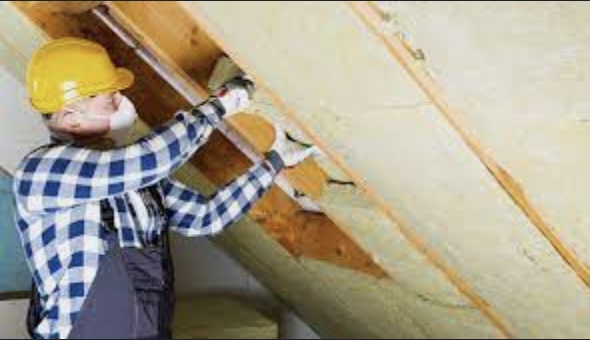Different Types of Roof Insulation

Roof insulation is a material installed on the inside of your roof to help keep your home warm in the winter and cool in the summer. It works by creating a barrier that stops heat from escaping your home through the roof during the colder months, and stops heat from entering your home during the warmer months. This helps to keep your home at a more comfortable temperature and can save you money on your energy bills. Think of it like putting a warm blanket on your roof to keep your home cozy and comfortable all year round!
There are many reasons why you should think of your roof insulation:
Energy Efficiency
Roof insulation is an excellent way to improve the energy efficiency of your home. When you insulate your house properly, you’ll use less energy to heat and cool it.
Cost Savings
Because roof insulation reduces the amount of energy required to heat and cool your home, it can lead to significant cost savings on your energy bills. In fact, many homeowners report that they see a noticeable decrease in their energy bills after installing roof insulation.
Increased Comfort
Roof insulation helps to create a more comfortable indoor environment. You’ll be able to maintain a more consistent temperature throughout your home, which means you won’t have to adjust the thermostat.
Environmental Benefits
Using less energy to heat and cool your home is not only good for your wallet, but it’s also good for the environment. You can help create a more healthy future by lowering your energy usage.
Noise Reduction
Roof insulation can also help to reduce noise pollution in your home. It can absorb sound waves and reduce the amount of noise that enters your home from the outside.
Types of Roof Insulation
There are several types of roof insulation, including:
Batt insulation
This is a common type of insulation that consists of fiberglass or mineral wool batts. These batts are typically installed between the roof joists and provide good thermal insulation.
Spray foam insulation
This type of insulation is sprayed onto the underside of the roof sheathing and expands to fill gaps and crevices. Spray foam insulation provides excellent thermal insulation and can also act as a vapor barrier.
Blown-in insulation
This type of insulation consists of loose-fill fiberglass or cellulose that is blown into the attic space. Blown-in insulation provides good thermal insulation and can be installed quickly and easily.
Rigid board insulation
This type of insulation consists of rigid foam boards that are installed between the roof sheathing and the roofing material. Rigid board insulation provides excellent thermal insulation and can also act as a vapor barrier.
Reflective insulation
This type of insulation is made of a reflective material that is installed under the roofing material. Reflective insulation helps to reflect heat away from the roof to reduce cooling costs in hot climates.
It’s important to choose the right type of insulation for your specific roof and climate to ensure the best possible insulation and energy efficiency.
Final Thoughts
Overall, roof insulation is a smart investment for any homeowner who wants to improve their home’s energy efficiency, save money on their energy bills, and create a more comfortable and sustainable living environment.




























